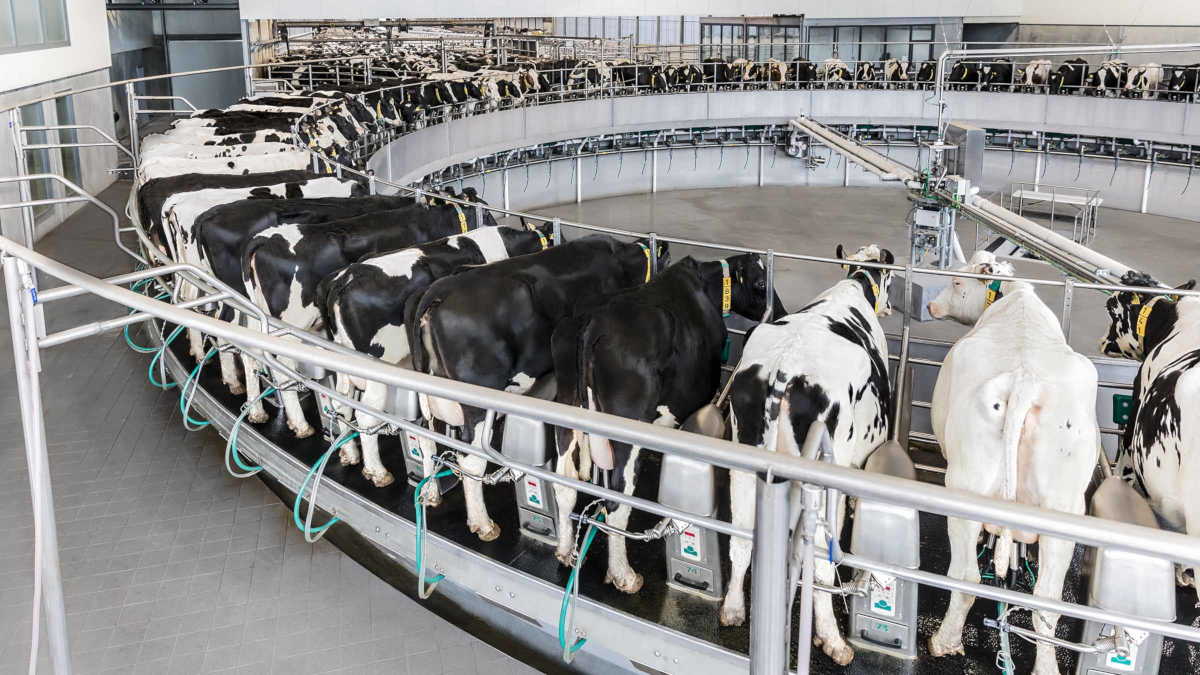Background
GEA Milfos is part of the global GEA Group, one of the world’s largest suppliers of equipment and technology for the food, beverage, and farming sectors. Based in Hamilton, New Zealand, the GEA Milfos team manufactures high-volume components for dairy operations. These include milking systems and structural equipment used in rotary and herringbone sheds.
To support future growth and take on more work from their international counterparts, GEA Milfos began exploring ways to reduce weld times and increase output across key product lines. This led to a collaboration with Autoa Robot Welding to integrate an S-4800 Robotic Welding Cell into their Hamilton manufacturing site.
Project Overview
Customer: GEA Milfos
Product: Dairy Milking Components
Country: Hamilton, New Zealand
Installed: 2020
Industry: Dairy Farming and Technology
Solution: S-4800 Robot Welding Cell
Featured Equipment: OTC FD-B6L Through-Arm, Long-Reach Welding Robot, OTC FD11 Robot Controller + Teach Pendant, OTC P500L Power Source + 500A Water-Cooled Torch, OTC 1PC500 Positioner Headstocks, Autoa Servo Controller Robot Slider (5000mm travel), Tip Cleaning Station, Integrated Safety Componentry.
The Solution
Autoa supplied and commissioned an S-4800 Robotic Welding Cell at GEA Milfos to support high-throughput production. The system was configured to handle a range of large, repetitive weldments commonly used in their dairy equipment.
The cell includes a long-reach OTC Daihen welding robot mounted on a 5-metre servo-driven track, providing flexible coverage across the weld zone. Two headstock positioners enable parts to be loaded and unloaded while the robot continues welding, minimising downtime between cycles.
The initial focus was a core component known as a bail or bale, used to separate cow stalls in milking sheds. Previously welded manually in around 45 minutes, this part now moves through the cell in just 7 to 8 minutes. The process delivers improved consistency and reduces handling. As confidence in the system grew, additional parts were introduced, expanding the cell’s value across production.
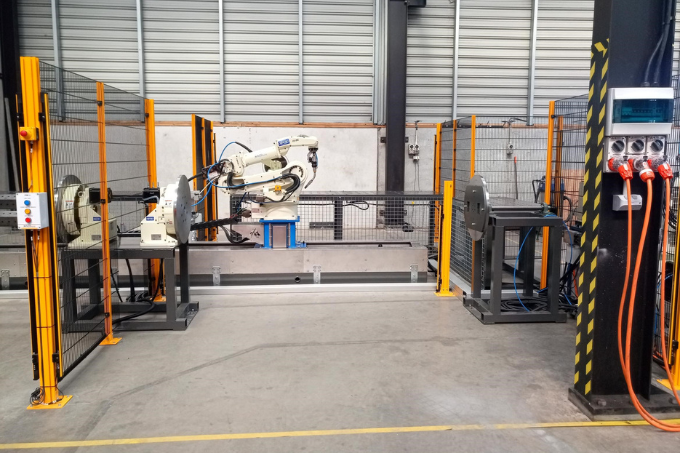
S-4800 robotic welding cell installed at GEA Milfos
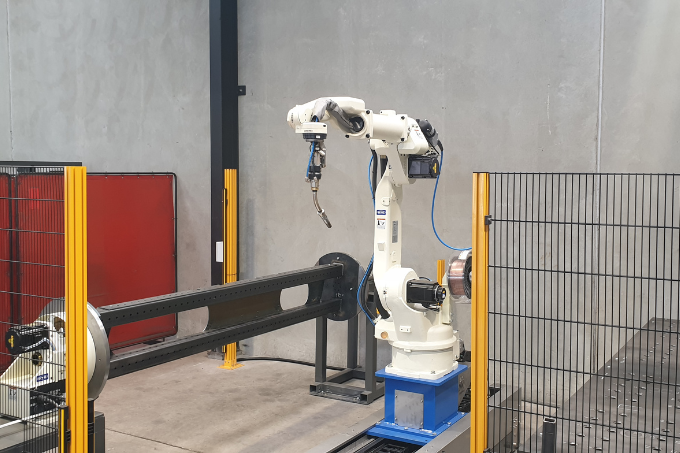
OTC FD-B6L welding robot mounted on 5m servo track
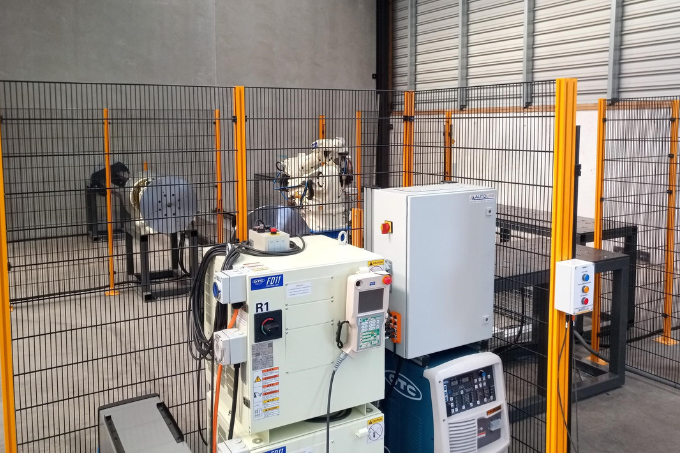
FD19 controller, teach pendant and OTC welding power source integrated with cell
The Results
The return on investment became clear early in the project. In its first year of operation, the S-4800 Robotic Welding Cell delivered over $37,000 in savings on the bail component alone.
“When you’re making between 1,200 and 1,300 of them annually, the savings add up substantially,” says Rakesh Singh, Director of Production Farm Technologies.
The investment allowed the team to meet higher production volumes without increasing labour costs or factory space. It also reduced pressure on manual welding resources, enabling staff to focus on other areas of production. As the cell was applied to more parts, the operational gains continued to grow, supporting long-term improvements in output and workflow.
The IMPACT ON HIDRIVE’S BUSINESS
The S-4800 Robotic Welding Cell gave GEA Milfos a clear platform for growth. By increasing capacity and demonstrating productivity improvements, the Hamilton team was able to secure more work from within the global GEA network.
Rather than replacing roles, the introduction of robotic welding allowed the business to redeploy skilled staff into other areas of production. This helped maintain workforce stability while creating more flexibility across the shop floor.
The success of the project has strengthened the team’s ability to take on high-volume work and scale output with confidence. Robotic welding is now a key part of GEA Milfos’ long-term manufacturing capability.
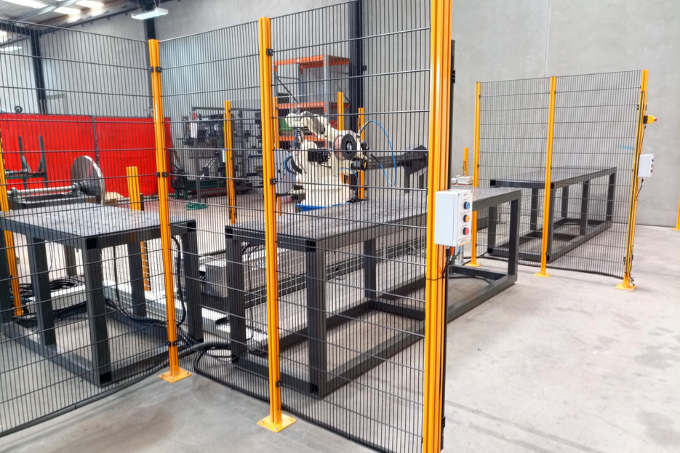
Integrated safety componentry on the S-4800 cell
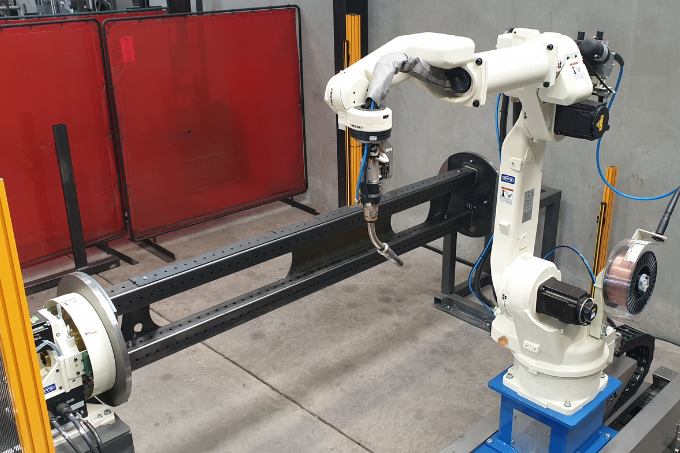
OTC FD-B6L robot positioned for structural dairy welding

OTC FD-B6L robot configured for large part welding
“We needed to show we were more productive with a robotic welder than doing it manually, and to demonstrate we could handle a higher capacity of work.
After that pilot project proved successful, we started using the robot for other high-volume parts too, and we saved thousands each year. The robot literally paid for itself. Order intake has increased since incorporating the robotic welder in 2020, and we’d recommend anyone else in the industry to upgrade to a robotic welder too.
If you’re doing high numbers of anything, it’s definitely a no-brainer. We haven’t had to lay off staff as a result; we’re busy enough that we can utilise their labour in other areas of production.” — Rakesh Singh, Director of Production Farm Technologies, GEA Hamilton
Contact Us
Start Your Robotic Welding Journey Today!
Let’s talk about how our robotic welding solutions can help your business. As a 100% family-owned company, we’re focused on making robotic welding simple and supporting you every step of the way.


